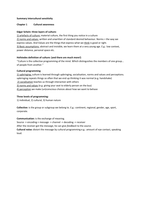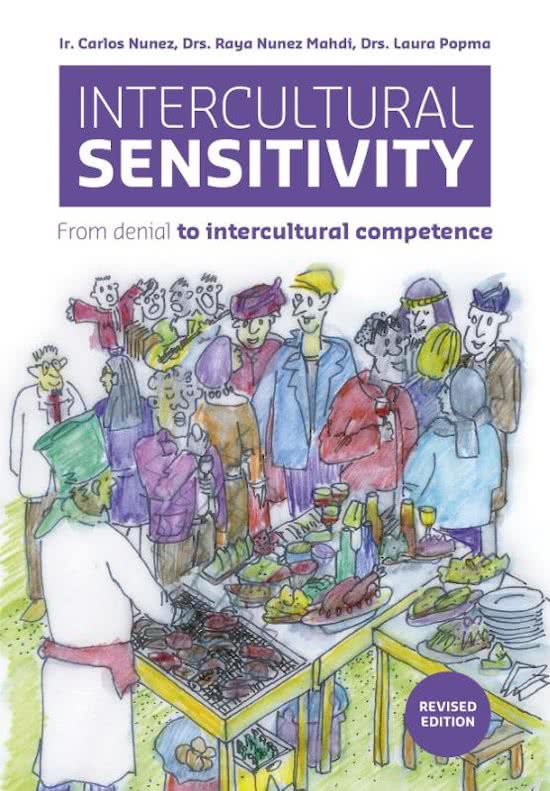Summary intercultural sensitivity
Chapter 1 Cultural awareness
Edgar Schein: three layers of culture:
1) artefacts of culture: material culture, the first thing you notice in a culture
2) norms and values: written and unwritten of standard desired behaviour. Norms = the way we
express values. And Values are the things that express what we think is good or right.
3) Basic assumptions: abstract and invisible, we learn them at a very young age. E.g.: low context,
power distance, personal space etc.
Hofstedes definition of culture: (and there are much more!)
‘’Culture is the collective programming of the mind. Which distinguishes the members of one group...
of people from another.’’
Cultural programming
1) upbringing: culture is learned through upbringing, socialisation, norms and values and perceptions.
upbringing repeats things so often that we end up thinking it was normal (e.g. handshake)
2) socialisation teaches us through interaction with others
3) norms and values (e.g. giving your seat to elderly person on the bus)
4) perception we make (un)conscious choices about how we want to behave
Three levels of programming:
1) individual, 2) cultural, 3) human nature
Collective: is the group or subgroup we belong to. E.g.: continent, regional, gender, age, sport,
corporate.
Communication: is the exchange of meaning.
Source -> encoding-> message -> channel -> decoding -> receiver
After the receiver got the message, he can give feedback to the source.
Cultural noise: distort the message by cultural programming e.g.: amount of eye contact, speaking
loud.






